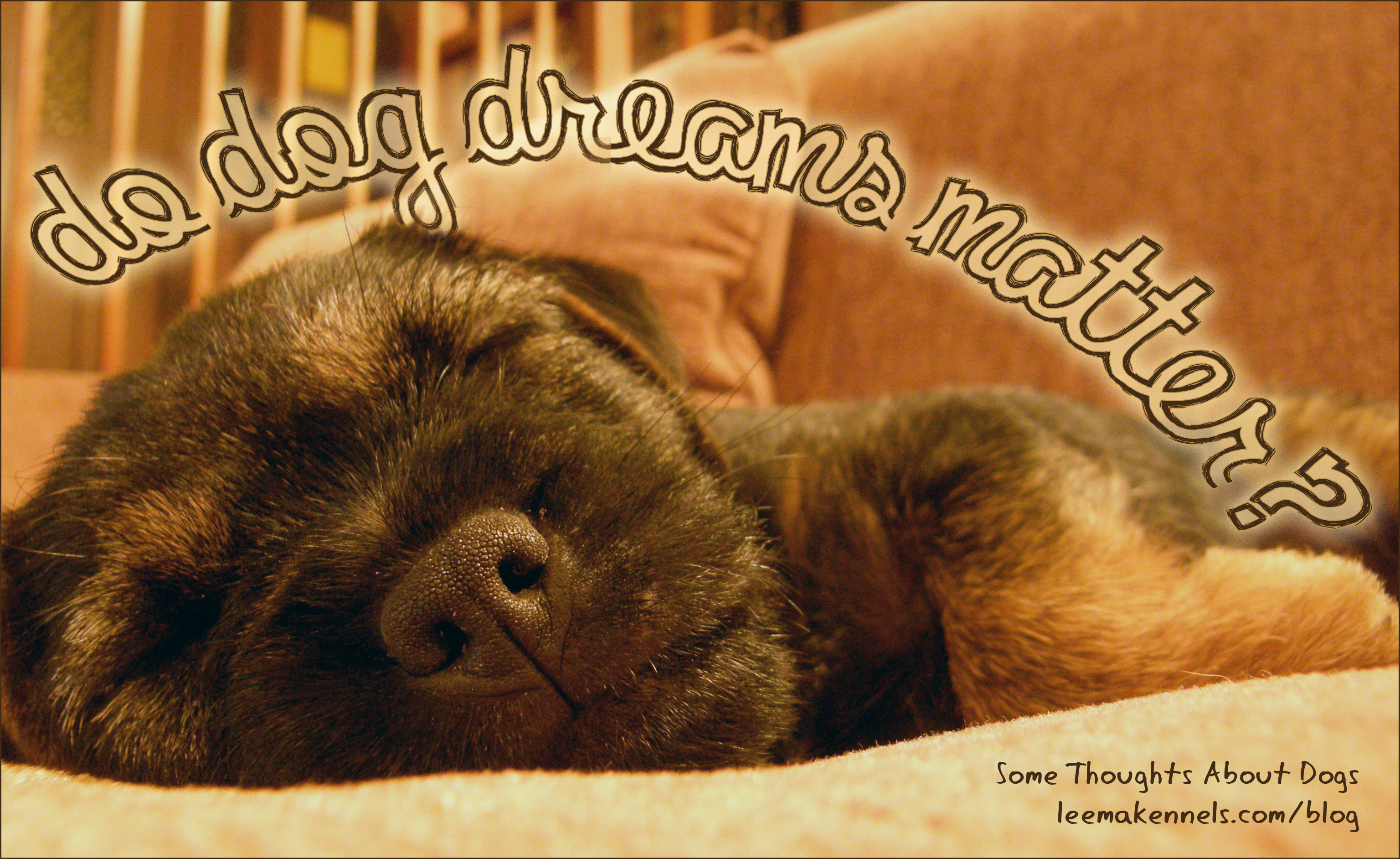Do dog dreams matter?

Listen by clicking play above, or read on…
Ever since I’ve been a child, I have had very significant nightmares. I often dream about my house being on fire, or being maimed or killed in a robbery or abduction or any other type of foul play. I have died many times in my dreams – more often than I can count.
Furthermore, I experience sleep paralysis. I wake or semi-wake from nightmares, only to not be able to move from bed, and have the terrifying experience of both being conscious of the fact that I am dreaming, but unable to remove myself from the situation. Then there are the times that I have just sleep paralysis with no dreaming, which is almost as frightening as your body tricks you into believing that you are also unable to breathe.
Luckily, I know that my dreams and nightmares are merely figments of my imagination, and I can rationalise the sleep paralysis experience. I know that a masked intruder has never entered the house and killed me or my partner. I know that I have never been in a house fire. I know that I have never been involved in a robbery and witnessed the slaughter of bystanders. I know that I have never, actually, been unable to breathe.
Despite ‘knowing’ that these things are not real, they still make way to very real fears for me. I slept with a light on until I was 14 and sometimes still do if I am home alone. I always lock my car doors when I am driving. At night, I am hyper-vigilant in public spaces, and often find myself looking for weapons to use in self defence.
Me, a rationale adult human, is very affected by the nightmares I have – even though they’re not real. Like Phoebe, in Friends (watch from 3 minutes).
http://youtu.be/2EomKbf9gks?t=3m
But I often I wonder if our dogs can conceptualise their dreams as real. Is it far-fetched to think that maybe dogs are psychologically affected by their dreams?
We know dogs must dream. We can see them partake in REM sleep. What they are dreaming about, however, remains a mystery.
Dreams are something we learn about. I remember a six year old telling me over breakfast, with a bemused expression, “I think I had a dream”. This child has knowledge on the concept of ‘dreams’, but was still connecting this term with her own cognitive processes. While we can teach children on what a dream is, we do not have this luxury with dogs.
Is there much of a difference between the memory of a dream and a memory of a real experience?
I have nightmares that result in real-life fears. Despite my capacity to conceptualise and rationalise my dreams, they still translate to fears in my life.
Is it possible that dogs are having nightmares? And is it such a big stretch to suggest that these dreams may affect a dog’s behaviour?
What do you think?
Further reading:


